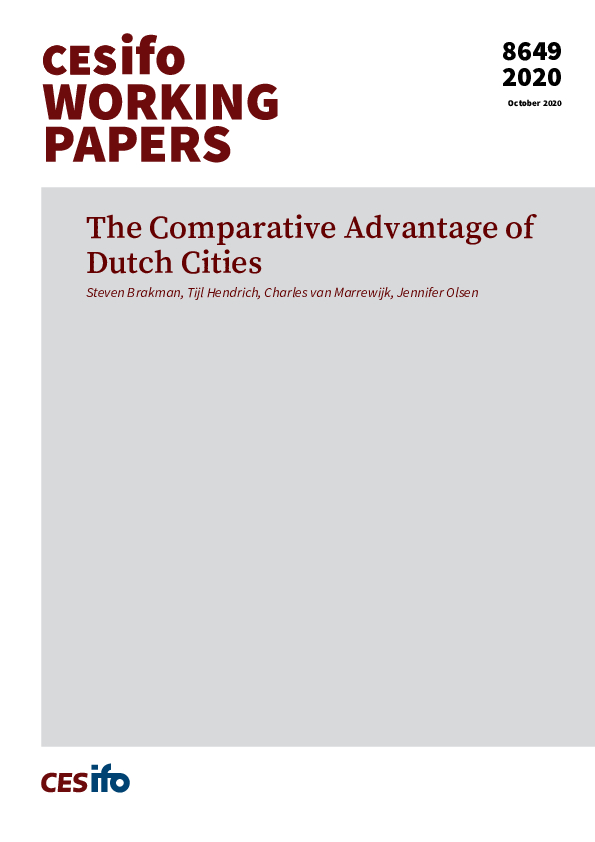The Comparative Advantage of Dutch Cities
CESifo, Munich, 2020
CESifo Working Paper No. 8649

The trade literature often treats countries as dimensionless points, which is a strong assumption. Agglomeration or lumpiness of production factors within countries can affect the national pattern of trade. In this paper we analyze comparative advantage patterns for 22 cities and 4 regions for (a selection of) 83 sectors within The Netherlands. Our findings are as follows. First, analysis of the lens condition indicates that the regional concentration of production factors (lumpiness) does not affect the Dutch national trade pattern. This suggests that the mobility of firms and factors of production is consistent with the so-called welfare maximizing integrated equilibrium. Second, despite the fact that the lens condition is verified, comparative advantage patterns across locations differ significantly from each other. We show this by comparing location specific distributions of the Balassa-Index (BI). Third, the differences across locations of comparative advantage patterns is determined by the interaction of local skill-abundance and sector skill-intensity, in line with the predictions of the factor abundance model. Moreover, at the sectoral level, location-specific variables such as market access or density, have limited effects. Fourth, most locations that house sectors that have a strong comparative (dis-) advantage relative to the Netherlands also have a strong comparative (dis-) advantage relative to the world. Only a few locations house sectors that are locally strong, but globally weak, and vice versa. The results indicate that international trade policies and disputes, such as Brexit or the US-China trade war, can have strong local consequences.
Trade Policy
Empirical and Theoretical Methods